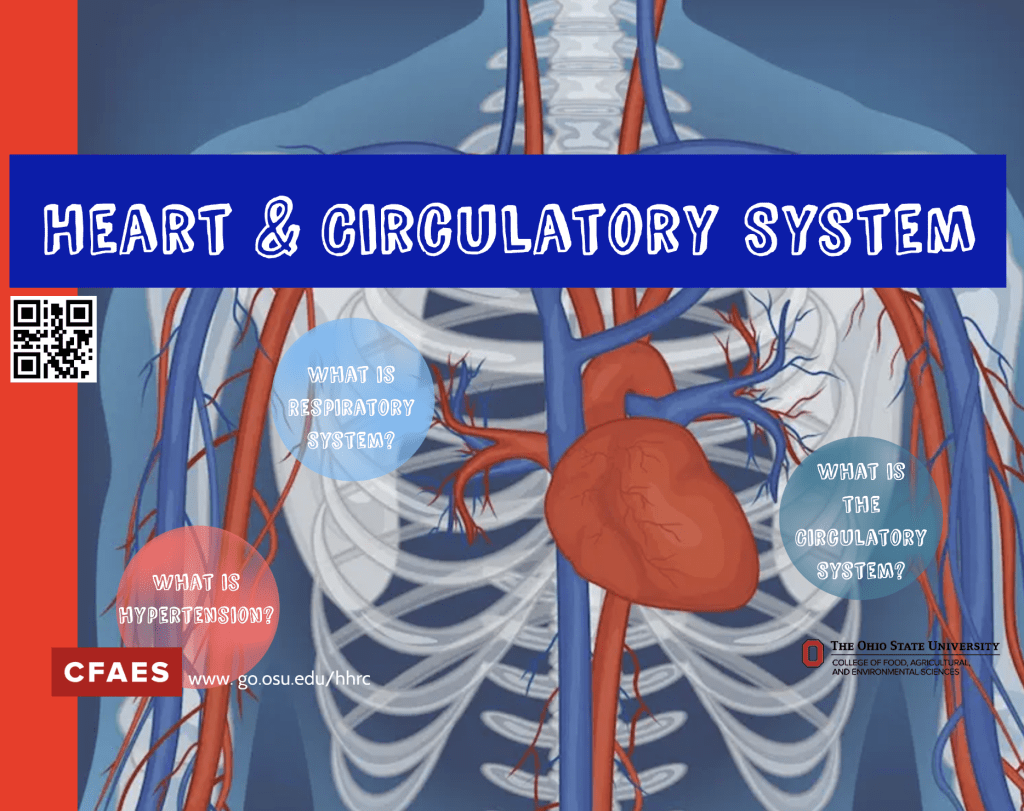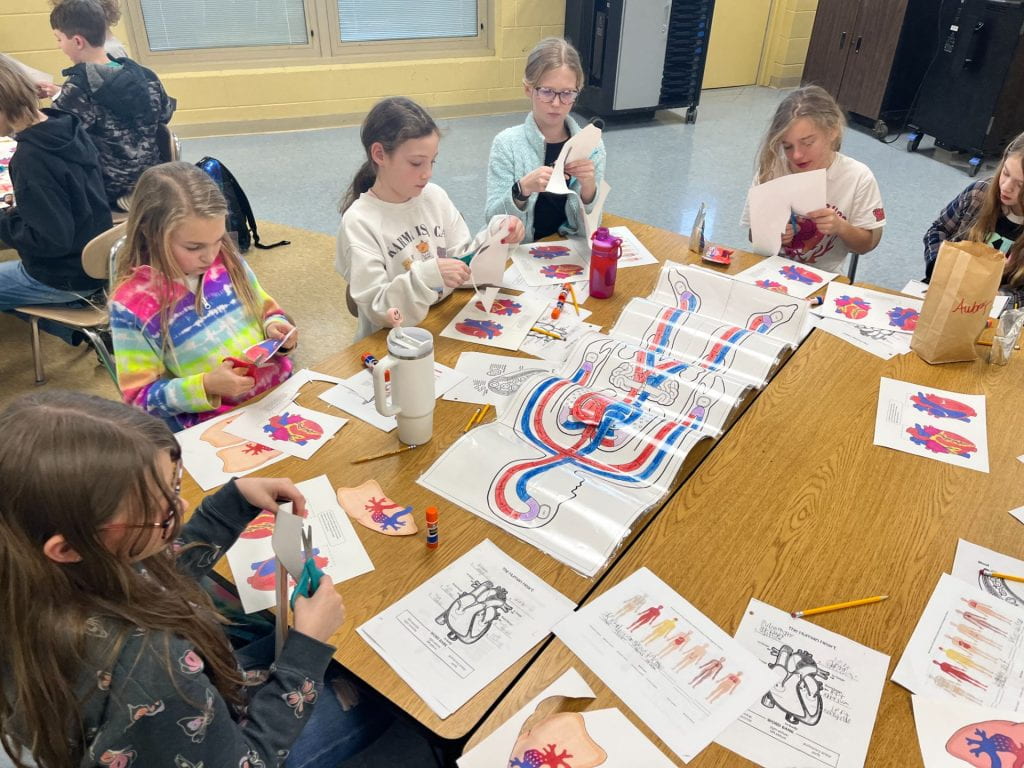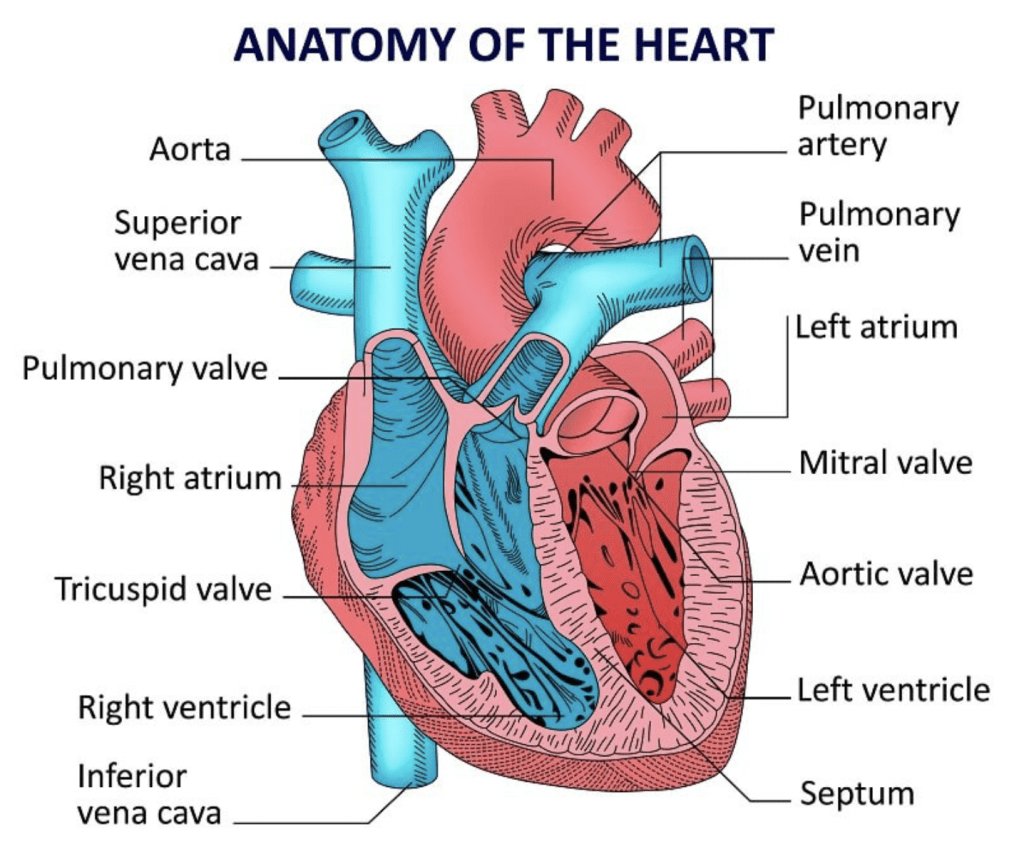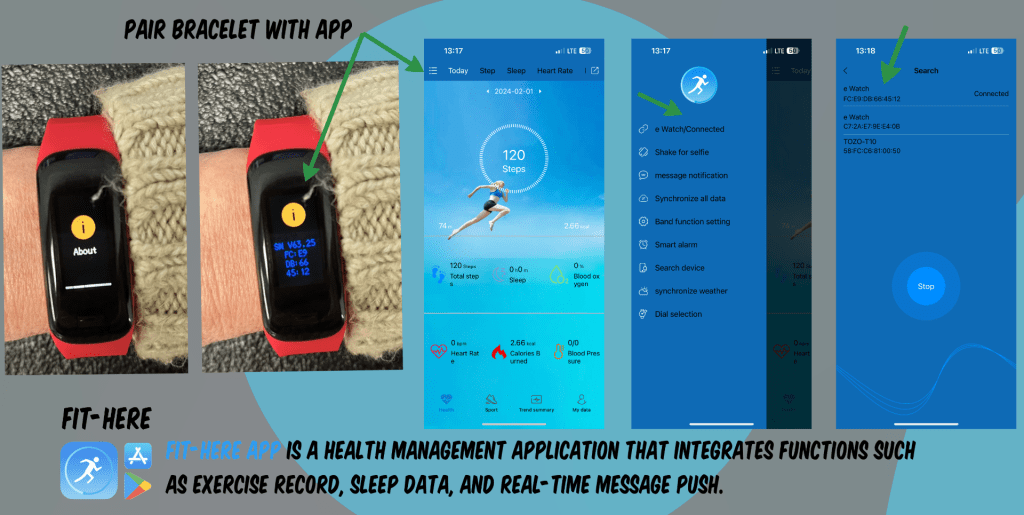By: Meghan Thoreau, OSU Extension Educator
In STEM Club, we stress the importance of multidisciplinary learning and problem-solving by allowing students to engage in hands-on STEM challenges. Remember, it takes more than one subject to solve real-world problems. It’s also important to stress a lifelong learning mode where the body and mind are working together. A healthy active mind requires a healthy active body; the two systems work and support each other.

Click on the presentation link below to rewatch the Heart and Circulatory videos watched during STEM Club, https://prezi.com/p/2gqjunmwk9mg/?present=1.
This unit focused on heart health, the circulatory system, the respiratory system, and how wearable tech helps people monitor their heart health, activity levels, and sleep cycles to contribute to a higher quality of life and well-being.

Students learn about the heart, the circulation system, and the respiratory system.
Heart Health
The heart is at the center of our blood delivery system and is therefore central to life and how our body works. The students learned about the anatomy of the heart, a muscle that beats 100,000 times per day in our chests’.

The heart pumps 5-6 quarts of blood each minute through 60,000 miles of blood vessels in our body. If we laid those blood vessels end to end, we could wrap them around Earth two and a half times. That is an incredible factoid to appreciate and hopefully cause the students to want to learn more about our complex human anatomy. Because of our body’s complexity, the students learn that we study the body by its systems. This STEM unit introduced two systems, the circulatory and the respiratory systems, and explained how they work together with the heart.

Source: http://www.sciencebook.dkonline.com/48.html
Wearable Technology
The second half of this unit focused on how wearable tech helps people monitor their heart health, activity levels, and sleep cycles. Wearable technology is a tool to help people maintain an active lifestyle by monitoring their body functions.

Click on the presentation link to review the interactive presentation that was presented during club time. It includes helpful reminders on how to use the smartwatches and pair devices to mobile devices using an App, https://prezi.com/view/8akYElau9Dnfcy90g1pF/.
Our young STEMist learned that physical fitness matters. Our body and brain need a mix of activity and mind challenges to stay healthy. Teens need at least 60 minutes of daily activity, whereas adults can get away with 150 minutes/week! Wearable technology is growing and becoming a popular accessory for all ages. It’s estimated that in 2023 almost 35% of people in the U.S. will be wearing some form of wearable technology.
The unit brokedown wearable technology and allowed students to see and understand all the working components. The students also learned how to calculate their resting heartbeat by hand.
Each student received a smartwatch to measure their heartbeats per minute (BPM) and blood pressure through a green LED pulse sensor. The smartwatch’s tracking features include steps, distance, calories, heart rate, blood pressure, and sleep monitoring, and the ability to be paired with an App for a mobile device for additional data and tracking analysis of heart health. The students were each given a smartwatch to have and continue exploring and using.

Finally, the students engaged in different physical fitness challenges while monitoring their BPMs. Students can also pair their smartwatches with a mobile device to look at their daily, weekly, or monthly activity. their data to a computer using free downloadable software to continue investigating their physical activity results.
Again refer to the STEM Club presentation on wearable technology for reminders on how to use smartwatches given to each student.